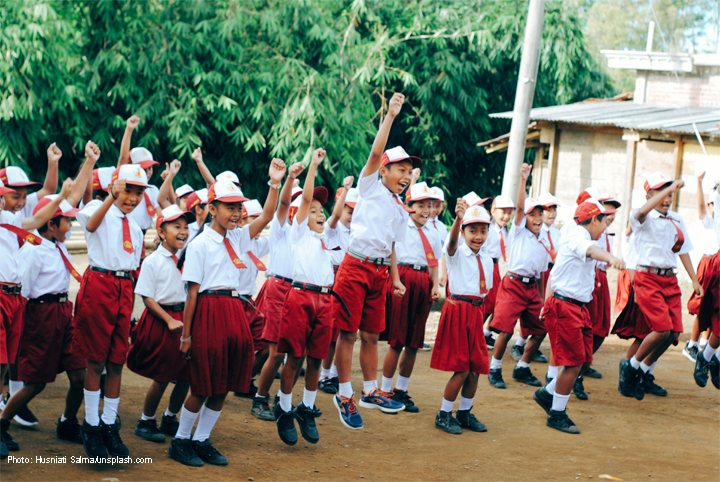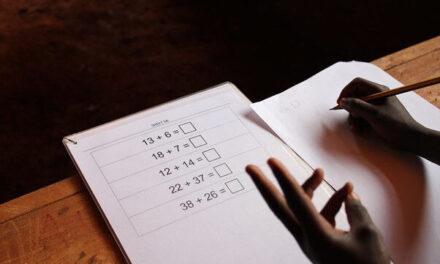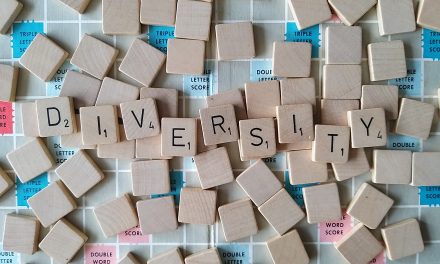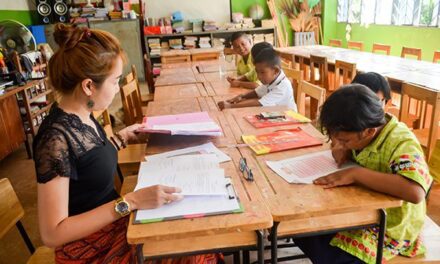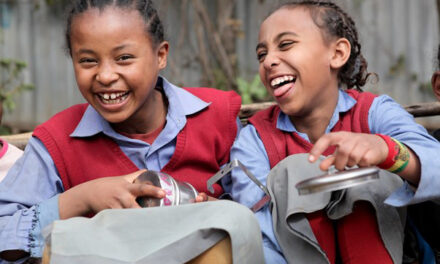This blog was written by Jeaniene Spink, Research Director, and Jacqueline Cheng, Research Fellow, ACER Education and Development research program. It was originally published on the ACER Discover site on 10 December 2020.
A new large-scale regional assessment has found large gaps in the learning outcomes of Grade 5 students in Southeast Asia.
Results released from the Southeast Asia Primary Learning Metrics (SEA-PLM) 2019 show alarming inequities in learning outcomes for children. While some students are excelling, others are falling far behind and are unlikely to catch up. Without foundational skills in reading, mathematics and writing, these students are likely to be disadvantaged well into their adult lives.
The SEA-PLM 2019 results found that 1 in 3 children in Grade 5 are still performing at the level expected in early primary school. In some countries, the percentage of children able to do the basics in literacy and numeracy is as low as just 2 per cent.
SEA-PLM is the first large-scale regional assessment of Grade 5 students for countries in Southeast Asia. The assessment uses reliable data and evidence to monitor learning outcomes in six Association of Southeast Asian Nations (ASEAN) countries – Cambodia, LAO PDR, Malaysia, Myanmar, Philippines and Viet Nam. It aims to understand what factors facilitate or hinder children’s learning and enable participating countries to track progress on foundational learning (SDG 4.1.1) and to develop and implement policies and programs to improve student learning outcomes.
SEA-PLM 2019 is jointly conducted by the Southeast Asian Ministers of Education Organization (SEAMEO) and the United Nations Children’s Fund (UNICEF), with technical support from the Australian Council for Educational Research (ACER). The assessment focuses on learning outcomes across three domains: reading, writing and mathematics. For the first time, global citizenship attitudes, values and behaviours of children (SDG 4.7) were also measured by a large-scale learning assessment at primary education level.
Proficiency scales in reading literacy, mathematical literacy and writing literacy were developed to enable countries to measure and report overall student performance in each of the three domains across contexts and over time. SEA-PLM proficiency scales provide insights into what children can do and, importantly, what they should aim to do next. Understanding that learning is a progression and that teaching must be targeted at the level of students’ abilities is central to understanding the results.
SEA-PLM 2019 found that after five years of schooling, approximately 1 in 5 students are only able to match a single word to a simple picture. Of more concern is that approximately 7 out of 10 students are approaching the end of their primary school education without meeting regional and global standards. This means that many of these students are unlikely to successfully transition to secondary school or engage in further education.
The results also reveal that many students are not demonstrating the mathematics proficiency expected of Grade 5 students. For example, after five years of schooling, approximately 1 in 5 students cannot solve a simple problem requiring them to add two single digit numbers together, or recognise which shape is a triangle.
SEA-PLM 2019 confirms persistent inequities, with children from wealthier backgrounds reaching higher levels of learning achievement than those from lower socioeconomic or disadvantaged contexts. Children who demonstrate a solid grasp of key foundational skills upon entering school consistently outperform those students who do not.
The education levels of parents and teachers also play a role in the learning outcomes of children and highlight the importance of homebased support for children’s learning. Approximately one-quarter of all teachers did not receive any training during their pre-service studies on how to teach the fundamentals of reading, writing and mathematics. Gender dynamics are also important, with girls more likely to perform better than boys, regardless of socioeconomic status or school location.
An important first step in addressing the learning gap is to understand what children know and to ensure that teachers have the support needed to effectively transition students from one level of proficiency to the next. SEA-PLM 2019 enables countries in Southeast Asia to gain these invaluable insights into where children are at in their learning and reinforces the importance of teachers, quality data and monitoring, and well-defined curricula.
SEA-PLM 2019 provides a set of policy recommendations to help address the learning gap. It strongly recommends an increase in access to early learning opportunities – in particular for disadvantaged children – improving school support, teacher education and policies, and increasing alignment of curriculum, assessment and pedagogies.
The recommendations include improving the capacity of governments to use data to monitor and better understand where children are at in their learning. It also encourages the use of SEA-PLM 2019 data and invites all countries in Southeast Asia to participate in SEA-PLM 2023.
Further information
Read the SEA-PLM 2019 Main Regional Report
Watch this SEA-PLM video
Learn more about SEA-PLM
Read the SEA-PLM 2019 Trial testing report (2018).
Find out more about ACER’s education and development work

